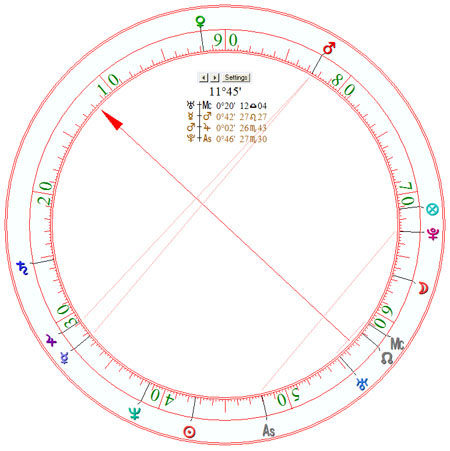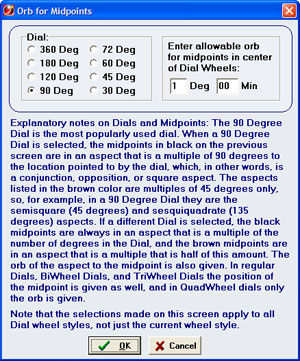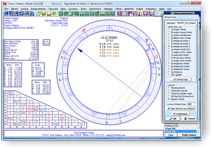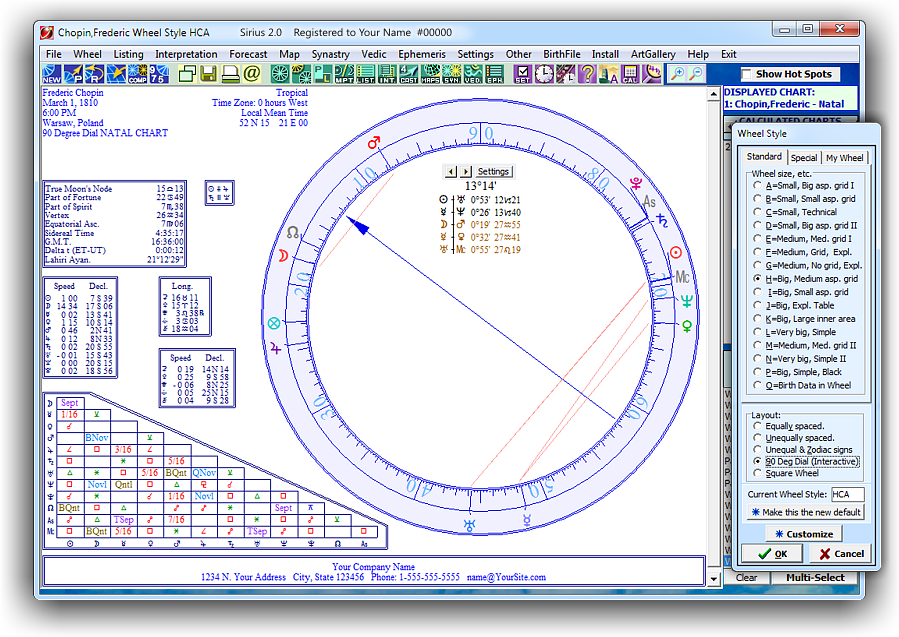 Windows 10 / 11 compatible!
Windows 10 / 11 compatible!
|
Cosmobiology is an astrological system that relies heavily on midpoints as well as some other features. Sirius provides extensive features for cosmobiology in forecasting, AstroMaps, etc. which are described on other website pages. An interactive cosmobiology dial is available for any wheel style which has a large enough wheel for the midpoint structures to fit. Shown below is one example of a 90 degree dial with a wheel style that includes an aspect grid and some listings of planets. You can click on the images above to see a larger version of the image.
Animated 90° Dial
Creating a 90 degree dial in Sirius is extremely easy, fun, and exciting. You can also easily change the color of the wheel: Simply right click on the wheel, select "90 degree dial" then click on "Customize" then select the Color Scheme that you want to use. Yes, it is that simple. 
Shown right is a sample of a regular 90 Degree Dial Wheel. The 90 degree dial is calculated by taking the position of a planet and subtracting out multiples of 90 degrees. For example, a planet at 20 degrees of Libra in 360 degree notation is at 200 degrees, and subtracting multiples of 90 degrees (in this case, 180 degrees) results in a 90 degree dial position of 20 degrees. Planets that are conjunct, opposition, or square in the natal chart are conjunct in a 90 degree dial. The 90 degree dial, therefore, is useful when you want to see planets in hard aspect (that is, conjunct, opposition, or square). Planets that are semisquare or sesquiquadrate appear as opposition in the 90 degree dial. A 90 degree dial is similar to a 4th harmonic chart. In both the 90 degree dial and the 4th harmonic chart, for example, planets that are conjunct, opposition, or square appear as conjunct. The 90 degree dial is easier to calculate manually. 
The 90 Degree Dial in Sirius is not only a chart wheel style that you can view, but also a chart wheel that you can work with interactively:
|


